#black agoutis
Text




🐱 Abyssinian
📸 Ademi Turdieva [Winter Garden Cattery]
🎨 Ruddy [Abyssinian Colours], Fawn Agouti
#photo#abyssinian#ABY#black#ruddy#fawn#agouti#ticked tabby#n 25#p 25#comparison#winter garden cattery
584 notes
·
View notes
Photo
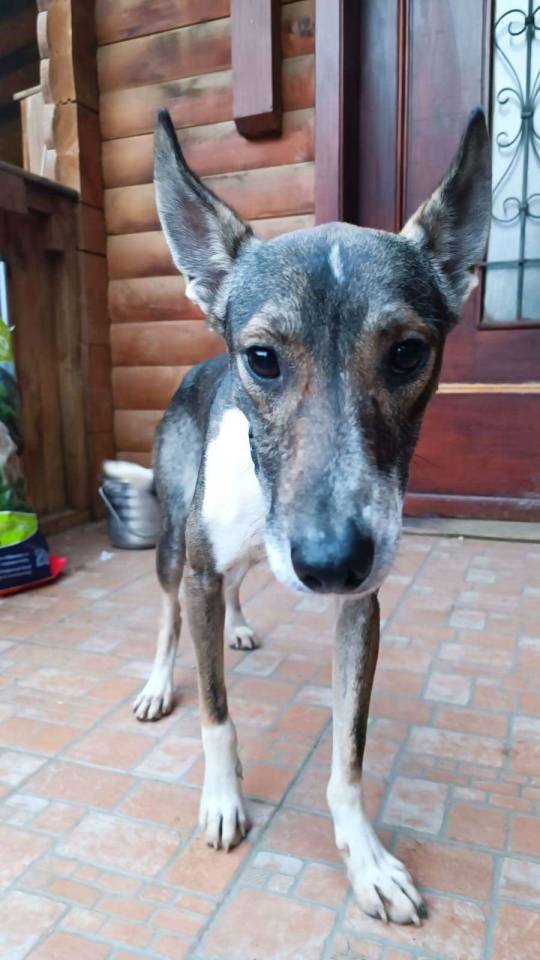
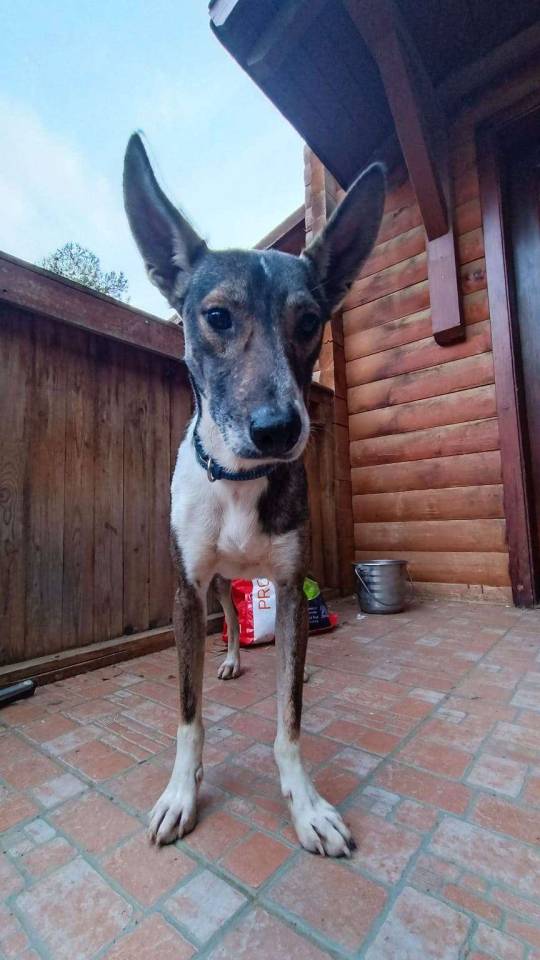
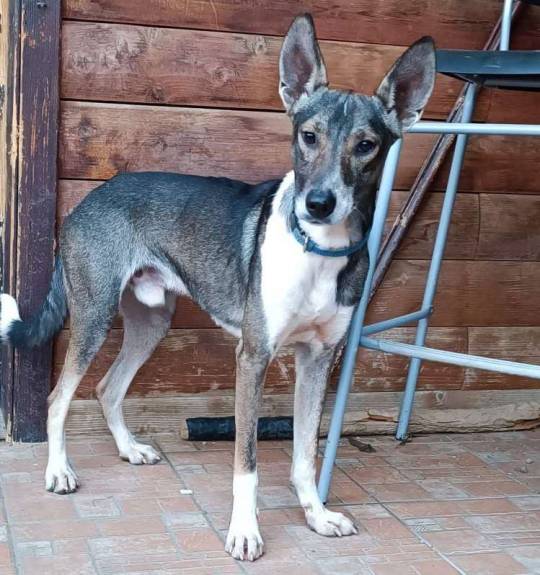
outstanding
the ears
they are OUT and they are STANDING
(source)
104 notes
·
View notes
Text



Rats used to be Vincent's old most prominently associated animal back back in the day, and I'm bringing rats back. The Rakali, or the Australian Water Rat? That's It, Baby
#save#got the big oversized feet#got the black and orange association got the agouti brown fur? Got the SCHNOZ#Affinity for shellfish? Check
8 notes
·
View notes
Note
I saw on the cat genetics visual guide that you reblogged that it says Agouti Ticked cats are a/a instead of A/-. Which I didn't know before. I always thought Agouti Ticked cats were A/- and homozygous for Ticked. (or maybe the guide is just incorrect? Or maybe I just missed this bit of information)
Do you know the science behind that?
And does this apply to Abyssinians and Somalis as well? Or can they be either a/a or A/-. I've just always wondered what makes them so different from normal Ticked cats besides breeding. (I assumed homozygous for Ticked + breeding for those visual traits)
There's also the Singapura and I've seen Agouti Ticked Maine Coons.
I am obsessed with animal color genetics, (cats, dogs, rabbits, horses, foxes, crested geckos, etc) and I really like trying to figure out specifically what's going on in the background. So sorry for so many questions 😅. (I also adore your blog and the tournaments!)
No, the guide is wrong there then, ticked is definitely A/_. I didn't read it over this thoroughly, sorry.
I think you have the right idea about somalis and abyssinians, they are selected for certain polygenes that give them their characteristic warm coloration and fur texture.
Yes, ticked is present in many cat breeds, including those you listed, and several more. These black ticked tabby kittens are norwegian forest cats, for example:

Haintrollen cattery
Ticked is the most 'dominant' (or epistatic, to be precise) tabby pattern, all the others can only manifest if the cat is a recessive homozygote for the ticked gene. But ticked cats still carry all the other tabby genes too, just don't express it.
Don't worry about the questions, i'm always happy to answer them 😸 and i'm glad you like the blog!
#ask and answer#agouti#ticked#black ticked tabby#black ticked tabby with white#i looked over that guide now again and one more think: sepia doesn't have blue eyes#point blue sepia regular (yellow ect) mink halfway (aqua)#roughly#*thing#also wide band restricts black pigment not red#cats
12 notes
·
View notes
Text




rare photos of the mischief all together!!
#mouse#mouseblr#my mice#my mouse#pet mice#pet mouse#mice#miceblr#mouse cage#mouse enclosure#rodentblr#seal point siamese#siamese mouse#black and tan#blue agouti#molting#rodent
131 notes
·
View notes
Text


#saïmiri#French Guiana#guyane française#Amazonia#South America#jungle#leaves#analog photography#black and white#photography#mine#tropical forest#matoutou#matoury#cacao#agouti#anaconda#piranhas#we wrote a song about it all#Home too#family
6 notes
·
View notes
Text
That coyote post reminds me, i need to go back to pestering the Wolf Quest devs about fixing the inaccurate coat color terminology
#wolf quest#the way they have it is inaccurate and makes it ten times as difficult to grasp#''well this wolf would technically be called grey even though it's red but that's because grey just means not black#and this wolf may look white but it's actually genetically black#any coat pattern can be black if it's dark enough''#just say it's either agouti or non-agouti please i'm begging you
5 notes
·
View notes
Text
My housemate reminded me of a flashbulb memory I have that I really wish I had a photograph of because it would be a magnificent image to inflict on the internet at large with Zero Context, but I'll try to describe it here, and then draw it after dinner.
Image Description:
As seen from about three feet off the ground: Interior, the den of an american suburban house built at the height of the atomic age and still decorated like it years later. There's dark wood paneling about halfway up the walls that offsets the almost neon pink-orange light of late sunset visible through the large window. Every object in the room is highlighted by the last of the sunlight. The only other light in the room is a TV set that was manufactured the same year Howdy Doody debuted on air, now broadcasting PBS Newshour in black and white.
Closest to the viewer, there is a small end table with a Nearly Full Martini glass, and a Half-empty glass Martini Pitcher, indicating that two of the five martinis it holds have been poured out.
Just behind it, an old man sits in a chair that was bright green and yellow when it was new but is now more Grellow. The man is in his mid-sixites, somewhat heavyset, with a full head of snow-white hair and thick glasses. He's wearing a dark brown tweed suit with leather elbow patches, and a white cotton button-up. He's watching the news with a calm and dispassionate demeanor. Tired, but still engrossed with the world's events. He's wearing dark brown penny loafers and garish argyle socks.
Behind him is a couch that is a matched set with the armchair, with the same Grellow chevron pattern, but there is a very large crochet afghan that has been spread out over the back to be decorative and maybe protect the couch from it's current occupant: a 120lb Wolf Hybrid.
She's seated lengthwise on the couch, like she had also been watching PBS Newshour, posed like a sphynx. She's close in wieght to the man, and definitely taller than him if she stands up, with a dark gray agouti coat and a bit of white countershading from the trace of domestic dog in her. She's turned her head to the viewer, bright yellow eyes focused on them, and the fur of her head and neck haloed with the sunset. She is pleased to see the veiwer, which means most of the teeth in her lower jaw are visible in her canine grin. The effect is very menacing if you don't know her.
Clutched rather neatly between her front paws is a second, identical martini glass, only not nearly quite so full as the old man's.
Title: "Oh, I didn't think you'd be back for another hour/GODDAMIT EDWIN"
5K notes
·
View notes
Text










Abyunicorn Opium Poppy
🐱 Abyssinian
📸 Spyzoo [Abyunicorn]
🎨 Ruddy [Abyssinian Colours]
#photo#abyssinian#ABY#black#ruddy#agouti#ticked tabby#n 25#named#spyzoo#abyunicorn#abyunicorn opium poppy
475 notes
·
View notes
Text

We got some FUR today.
#EM1#starting to think these dark ones aren't steels#the black is very uniform#which is GOOD#assuming they're not just masking steel#would be my luck that none of the agouti kits hit the odds for the steel gene if their dad does have it
0 notes
Note
Hi Greer! Im raising a whole litter of kittens and im honestly wondering about what you think their genetics are? Theyre a bunch of little love bugs and seeing you post about Belphegor has got me curious. I think they're tricolors, but we somehow got a tabby (?) in the bunch as well and Im wondering whats going on with this thing

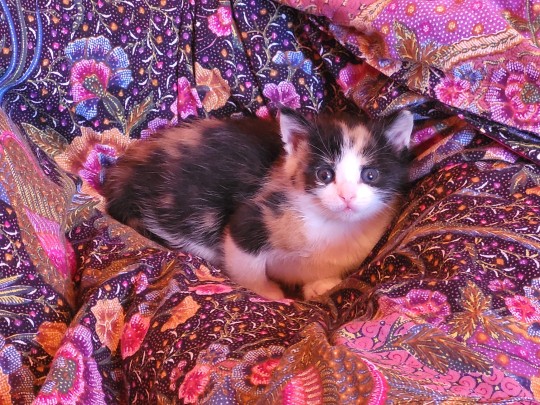
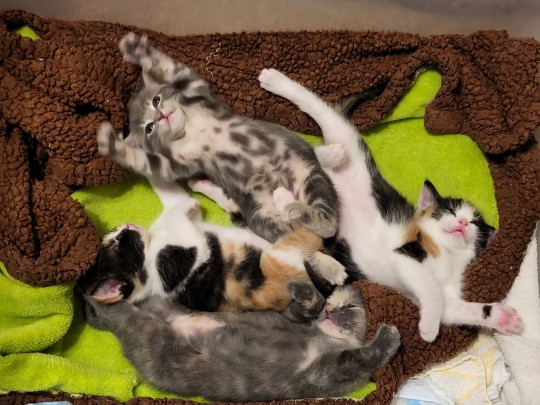
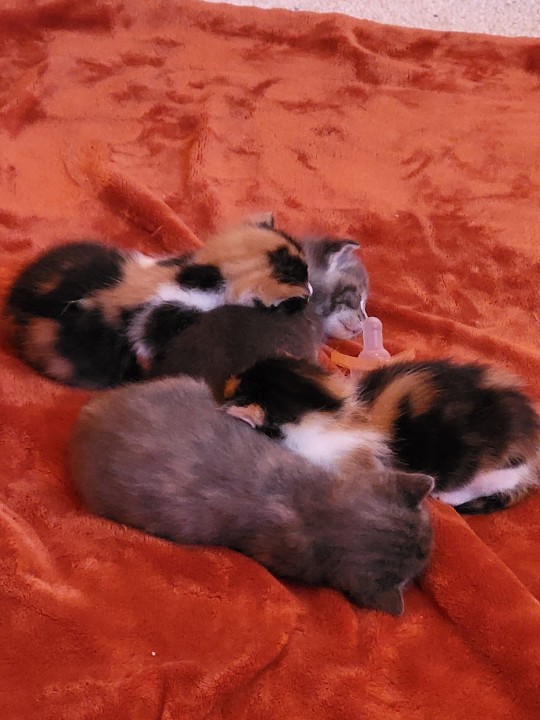
in this litter, you have 1 blue tabby, 1 blue tortoiseshell, and 2 tortoiseshells with white. I can help break down what that means.
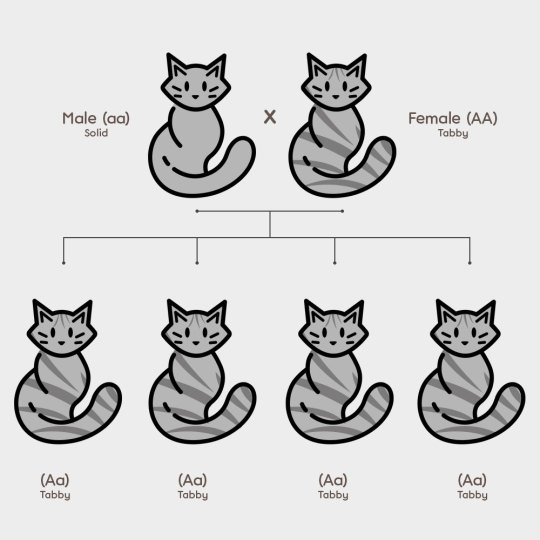
so agouti (aka tabby) is a dominant gene. being self-coloured (aka solid) is recessive. this means that the parents of this litter both carried the recessive gene for solid, but at least one was a tabby.
now onto the tortoiseshells. red is an X-linked colour. male cats typically only have one X chromosome, so they can either get a black-X or a red-X (and be black or red).
female cats have two XX's, so they can inherit one of each. when this happens, the two colours both try to express at the same time, giving the cat a patchwork appearance!
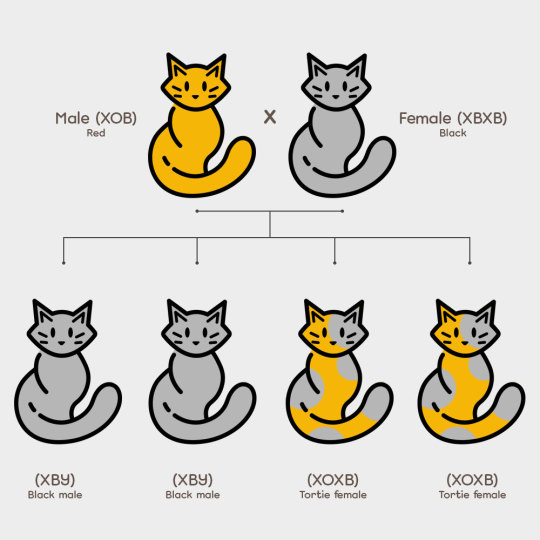
as for the blue tabby and blue tortoiseshell, this happens when a black cat receives a double-copy of the dilution gene. so both parents of this litter had at least one copy to pass down.

and lastly, the white spotting. think of this as a can of white paint thrown at a cat, covering up everything beneath it. this is a co-dominant colour, and two copies of it can result in a pure white cat.
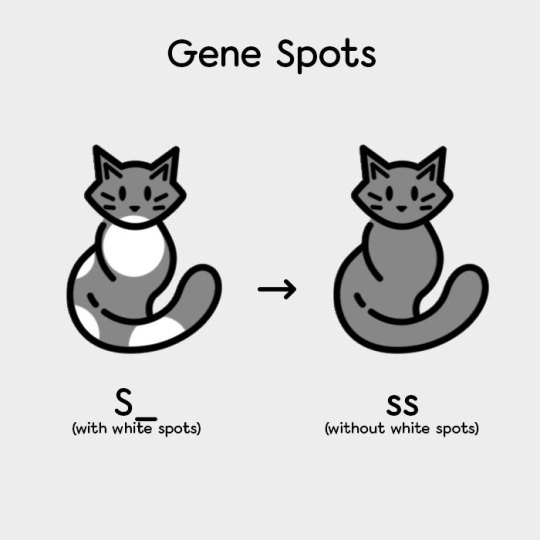
it's common to call a tortoiseshell with white spotting a calico, or a tri-colour, but there's no one calico gene. rather, it's a bunch of genes working together to create the effect!
(all these helpful diagrams came from King Size cattery)
2K notes
·
View notes
Note
I don't understand amber. How does it work? What does it do? How is it different from wide band/golden/ect.? Please explain
Ohoho, you invited me to talk about my favourite gene!
Amber is the mutation of the MC1R (melanocortin 1 receptor) gene. Recessive mutations here are associated with red and yellow color varieties in lots of species: rabbits, horses, mice and humans, to mention a few examples.


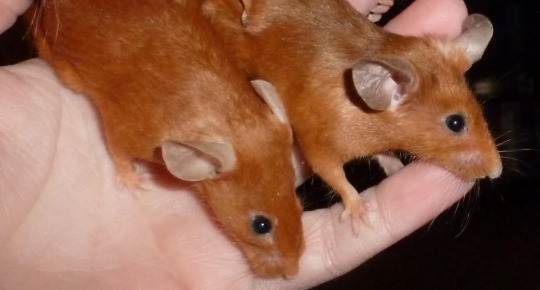

So what does this gene do? Replaces the black pigment with red. That's the gist of it.
The regular orange color of cats is a different gene, but they have similar molecular backgrounds: red and amber are both phaeomelanin-based colors. Phaeomelanin is one of the two most important pigment types in mammals, together with eumelanin. Eumelanin is responsible for black and brown colors, phaeomelanin is for reds and yellows. Black, chocolate and cinnamon are the traditional eumelanin-based cat colors.
Eumelanin-based tabbies have both eumelanin and phaeomelanin in their fur, the alternation of these two pigments make the agouti hairs banded: the lighter bands have only phaeomelanin. Phaeomelanin-based colors have only or overwhelmingly phaeomelanin in both the lighter and darker bands (the difference is probably the amount of pigments).
Now wide band does something different: it extends the lighter bands, so the coloration becomes less eumelanin-dominated (when there's eumelanin present). Thus, yellow cat.
The first figure shows basically the comparison of the hairs of a black and a red or amber tabby, the second is how golden hairs look like:


That's the difference between amber and golden. One of them changes the color of the agouti bands, the other changes their size.
Here's a red, an amber and a golden cat for comparison:



The amber tabby in the middle has darker orange tabby pattern, the black golden cat still has a black tailtip, black feet, sometimes even some black markings on the face.
The coolest thing about amber is that unlike red and golden, the kittens born with a lot of eumelanin, and they gradually lose it as they mature. Like this:
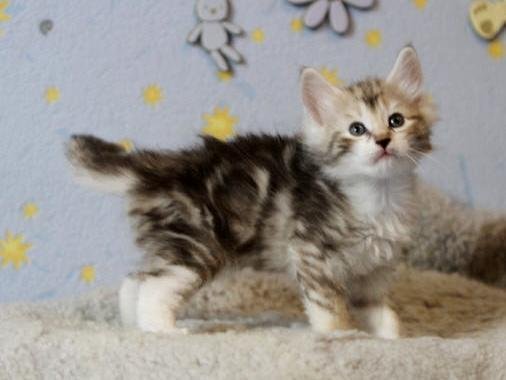

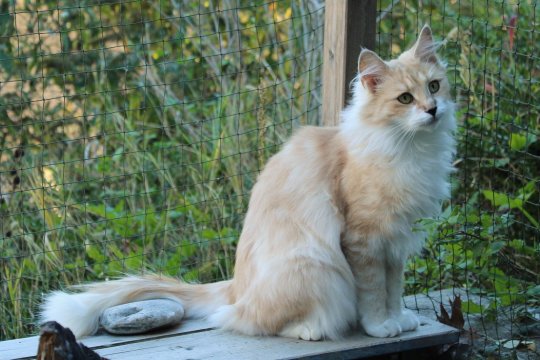
Nowaja (Galaxy vom Ritterclan), amber smoke with white
1K notes
·
View notes
Note
Hi!! i was looking through the masterpost and couldn't find anything for it, so i wanted to ask- is there any guide to how cats would be described in the allegiances page in-game? ex. a rosette cat being described as "oddly-spotted" etc. i wanna use similar descriptors for cats, but the page only accounts for alive cats inside the clan, so i was wondering if theres any list of what pelt traits indicate what description is used?
Well, there was no resource for this, but let's make one now! I peeked into the files to grab the descriptors for you :]
Below the readmore, this is very long as I included everything that goes into it! Hopefully it helps <3
☆ Fable ☆
Colour Descriptors
"pale"— White
Only called "pale" if the cat is not singlecolour, twocolour, tortoiseshell, or calico. In these cases, it is called "white"
"pale gray"— Palegrey
"gray"— Grey
"dark gray"— Darkgrey
"pale ginger"— Paleginger
"dark ginger"— Darkginger, Sienna
"light brown"— Lightbrown, Lilac
"golden brown"— Golden-brown
"dark brown"— Darkbrown, Chocolate
"black"— Ghost
Colours that are listed the same as they are coded�� Silver, Golden, Ginger, Brown, Black
Pattern Descriptors
"[colour] tabby"— Tabby, Marbled, Mackerel, Classic, Agouti, Sokoke
"speckled [colour]"— Speckled
"unusually dappled [colour]"— Bengal
"unusually spotted [colour]"— Rosette
"[colour] ticked"— Ticked
"[colour] smoke"— Smoke
"dorsal-striped [colour]"— Singlestripe
"masked [colour] tabby"— Masked
Tortoiseshell Descriptors
"[colour]"— [Base colour]/[Patch colour]
Base colour refers to the main colour, while patch colour refers to the colour of the cats patches. They are always written with the slash between them
Examples: brown/ginger, pale gray/black
"[colour] tortie"— A tortoiseshell with either no white patch, or a white patch that is either classed as little white or mid white.
"[colour] calico"— A tortoiseshell with a white patch that is either classed as high white or mostly white.
"[colour] mottled"— A tortoiseshell whose base colour and patch colours are both in the brown, black, or white category
They do not need to both be in the same category, just one of those three; a lilac and ghost tortoiseshell will be listed as mottled, for example, but a lilac and ginger tortoiseshell will not
"[descriptor] tabby"— If a tortoiseshell has the pelt type Tabby, Ticked, Mackerel, Classic, Sokoke, Agouti, Bengal, Rosette, or Speckled, "tabby" is added after the descriptor.
Example: A Lilac and Ginger tortoiseshell tabby with the Rosette pattern and no white patches would be listed as a "light brown/ginger tortie tabby"
White Patch Descriptors
"[colour] and white"— A non-tortoiseshell with a white patch that is either classed as little white, mid white, or high white.
Can also be a tortoiseshell with a white patch that is either classed as little white or mid white
"white and [colour]"— A non-tortoiseshell with a white patch that is classed as mostly white.
"white"— A cat with the Fullwhite patch, regardless of what colour they are underneath. Overwrites their main colour
This is different to a singlecolour white cat as they have a different pelt type underneath the patch. Fullwhite cats that are tortoiseshell underneath are listed as calico on their profile page, but not the allegiances
"[colour] point"— A cat with one of the point markings
If a cat is a point under the ginger category, they are listed as a flame point
Gender Descriptors
"she-cat"— Female, Trans Female
"tom"— Male, Trans Male
"cat"— All other identities
Extra Descriptors
"vitiligo"— A cat with vitiligo
Missing body parts have special listings, as follows;
"no tail"— NoTail
"half a tail"— HalfTail
"three legs"— NoPaw
"a missing ear"— NoLeftEar, NoRightEar
"no ears"— NoEar
Vitiligo and missing body parts are joined together as "vitiligo, [scar], [scar] and [scar]"
"scarred [colour]"— A cat with three or more scars
"long-furred [colour]"— A cat with long fur
Putting it Together
For a non-tortoiseshell with no white patches:
a [extra] [colour] [pattern/tortoiseshell] [white] [gender] with [extra]
You would remove any non-used sections. Examples below;
a long-furred dorsal-striped pale gray tom with vitiligo and three legs
a dark ginger/light brown tortie tabby she-cat
a scarred white and unusually spotted black cat
a long-furred scarred light brown/black mottled point she-cat
with no tail, three legs and a missing ear
251 notes
·
View notes
Text
So You Want to Write about Horses: Color Edition
Well, your knight better not be riding in on a white horse, because that horse is actually grey! And what do you mean a brown horse? Is your cowboy's faithful horse sorrel or chestnut and what does it matter?
I can help.
(Part 4! Enjoy this post? Want to know more? Check out So You Want To Write About Horses Part 1 and Part 2 and So You Want To Write About Horses: Medieval Edition)
Lets begin with base horse colors:
This is fairly easy. All horses are either red-based or black-based. The other colors of horses are all modifications on these two basic variations. A plain red-based horse is a chestnut horse. If you live West of the Mississippi river, you would call this horse a sorrel. Same thing.
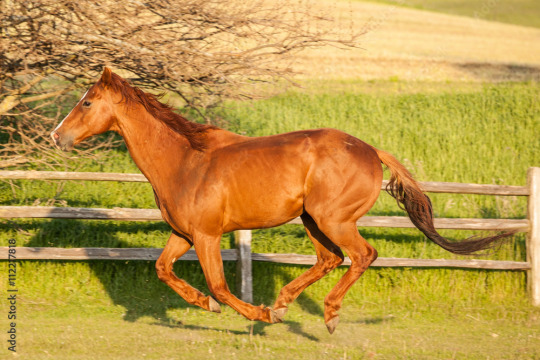
A plain black-based horse is a black horse.
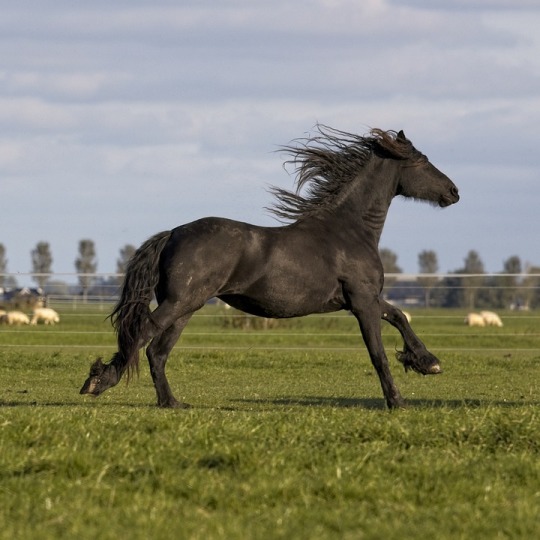
Easy, right?
Genetically speaking, the choice between a black or a chestnut is controlled by the Extension gene, represented as E/e. A black horse is created when the genetics are either EE or Ee, as the Extension gene is dominant. A chestnut horse can only be ee, the regressive form with no black hair expression.
However, black horses are actually not that common, relatively speaking. Most horses are some form of chestnut, ee, or a bay.

The bay horse is a variation on a black base. They have black manes and tails, black on their legs, and red or brown bodies. A bay horse is created by the Agouti gene (A/a), which changes the expression of the Extension gene (E/e). So a horse with EE AA will be a bay horse, like above. A horse with Ee Aa will also be a bay horse, exactly the same. In order for a horse to be black, they must have a dominant Extension gene and a regressive Agouti gene, EE aa or Ee aa.
Chestnut horses have no black in their coat, so the Agouti gene cannot affect them. They can be carriers, however, and make a bay horse when paired with a black horse. A chestnut horse could be ee aa, ee Aa, or ee AA, and look completely the same.
Congradulations, you now know horse color genetics! Now for the fun ones.
Dun Genes
If you've ever seen Spirit, Stallion of the Cimarron, you know this color
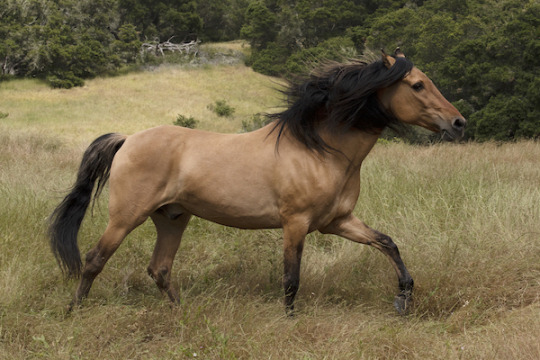
^This is the actual colt that Dreamworks animators modeled from!
Dun (D/nd1/nd2) is a gene that modifies all base coat colors. It can modify black, creating a black dun/grullo horse, it can modify bay, creating a bay dun, and it can modify chestnut, creating a red dun. In all of these variations, the body of the horse is lightened, the mane, tail, and legs are dark, and the horse has 'primitive' markings, including an eel stripe down the back, darker face, and leg bars.

If you notice, dun has three variations! D is the dominant form, so any horse with D is a dun of some kind. Nd1 is a variant in the same gene that gives the horse similar markings, but it is not dun, and will be over powered by the dominant D version. Nd2 is a horse with no dun factor, so no markings or lighter coat. Dun horses can be D/D, D/nd2, D/nd1. A horse with non-dun factor (and look similar to a dun) can be nd1/nd1 or nd1/nd2. A bay, black, or chestnut horse will be nd2/nd2.
Cream Gene
Another gene diluting color is the cream gene, which you may know from the famous horse of Roy Rogers, Trigger
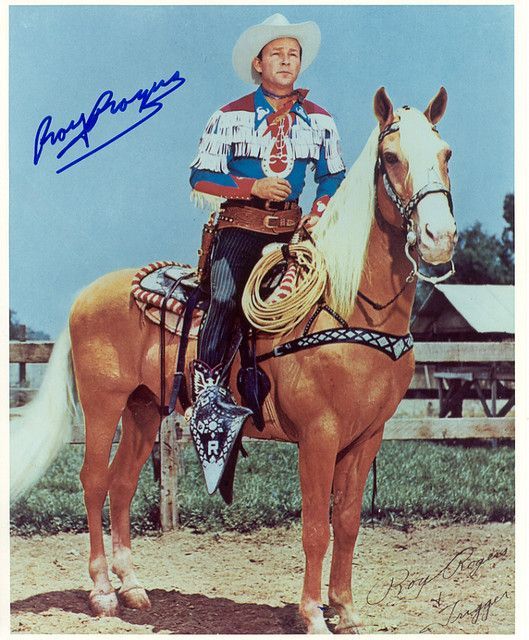
Trigger is a beautiful example of a palomino, a red-based cream dilute. As you can see, Trigger has a pale mane and tale and a gold colored body. Cream (Cr/Prl/-) is a dilution gene, or a hypomelanism gene, meaning it prevents red color in horse hair. Any red on a horse will be lightened. Chestnut horses, being all red, will have their entire bodies, mane, and tail lightened. Bay horses, with red hair only on their bodies, will have the body lightened, but the black mane, tail, and legs stay black, creating a buckskin horse
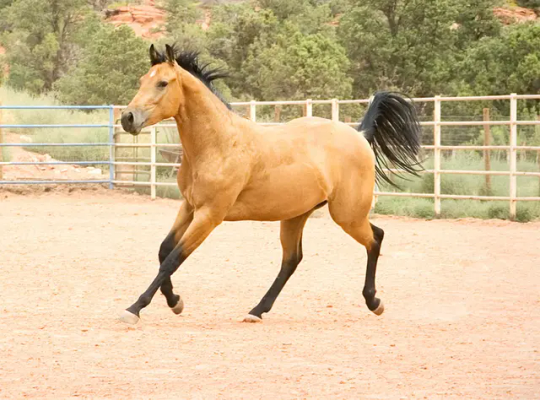
But wait! That horse looks exactly like the bay dun horse! Yes. Yes they do. However, buckskins do not have eel stripes, leg bars, or darker heads, and are a completely different gene. In fact, you can mix the two get a cream dun (Dunskin). It might be a slightly lighter dun.
Because a black horse has no red, black horses with the Cream dilute stay black, IF they have only one version (Ee aa Cr). Cream is an incomplete dominant gene, meaning that two versions makes the effect of the gene even stronger. Double creme dilutes are Cremellos, and they are very pale (but not white!)
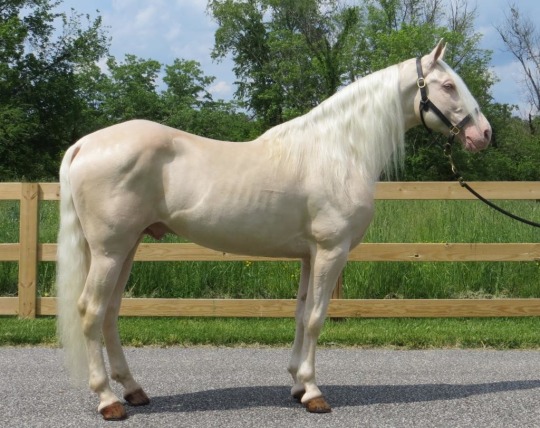
The double creme dilute overrides all the other genes. They are still there, but the horse is so pale, you can't see them. A variation of this color is the perlino, a horse with a recessive dilute gene called Pearl (Prl/-)

Pearl is recessive, meaning that one copy does not change the horse's coat. Two copies creates the perlino, and because Pearl is on the same gene as Cream, a false cremello can be created by a horse with one cream gene and one pearl gene. Crazy, right?
Now, there are so many more genes, but lets skip ahead to some patterns.
Horse Patterns
These are technically not colors, but rather genes that selectively turn off color in certain areas to create a coat pattern in horses. The most important of these are Tobiano, Frame, and Appaloosa genes.
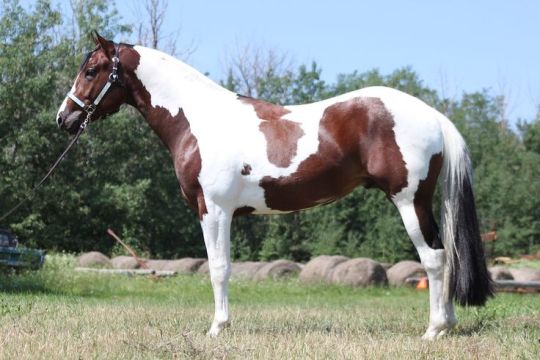
Tobiano is the gene for the coats of Paint horses (a color breed with a registry) and one of the genes for pinto horses. Pinto means any horse with large splashes of white, which includes the Frame gene, also known as Overo.

Both of these horses are Pintos, but only the lower one is an American Paint Horse, or Paint, and the top one has the Tobiano gene (TO), while the bottom has the Frame gene (O). A horse can be double Tobiano (TO/TO), Tobiano and Frame (known as Tovero) (TO/O), but a double Frame horse will die an early and painful death, due to Lethal White Factor.
Lethal White Overo is when two Frame horses are bred together and the foal receives the O gene from both parents. The foal can survive birth, but has malformations of the intestines that are incompatable with life. ALL affected horses die within days of birth.
Appaloosa horses are a very interesting horse. Technically, Appaloosa refers to a breed, developed by the Nez Perce tribe in the Pacific Northwest. Appaloosa is thought to come from "a Palouse horse", the name of a major river in the tribe's area. When the tribe was forced on a reservation, most of the horses were slaughtered or given to local white settlers, leading to many Appaloosa horses becoming merged to the Quarter Horse breed. As a result, most people use it as a color term.
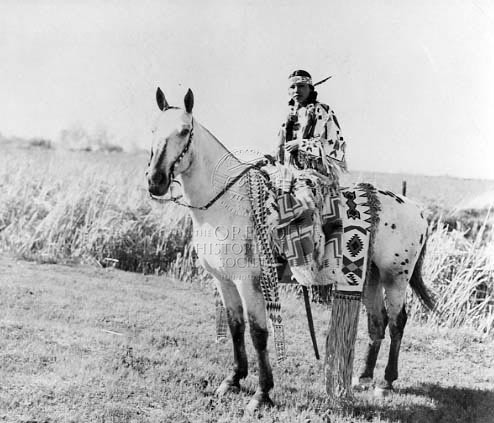
Nancy Wak Wak (Umatilla) on an Appaloosa, 1937. Oregon Historical Society Research Library, 018041
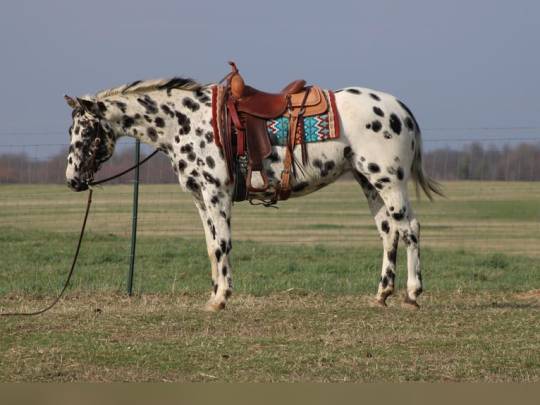
The genes responsible for the Appaloosa pattern is the Leopard Complex, controlled by an incomplete dominant gene (Lp/-), which turns on the complex when present, and turns it off when absent. Several other genes control the amount of white, the type of white, how big the spots are, ect. One Lp turns the complex on, but two Lps creates a mostly white blanket, or a fewspot coat.
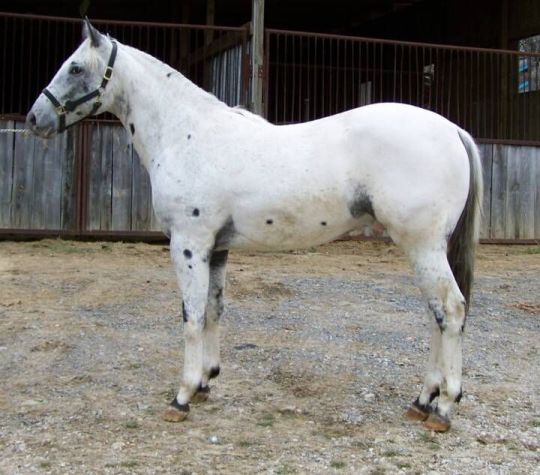
This horse has double Lp. The horse above it has one Lp, creating the many spotted coat.
Not all spotted horses are Appaloosas! In Denmark, the Knabstrupper is a breed of horse with no relation to the Appaloosa, but with the same gene creating the same spotted coat. Completely different breed, different origins, but same genes.
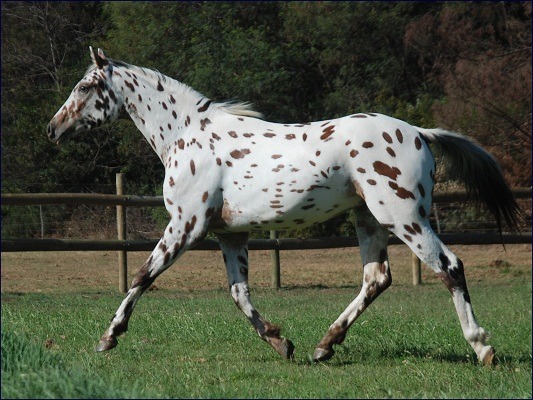
In all of these patterns, the pattern can be maximal, or very visible, or minimal, and not visible at all. A horse can look solid colored, but be hiding a pattern gene. So if you want to make babies, test your horse's genetics first! You do not want to accidentally cause a genetic deficiency.
Finally, the famous white horse.
Grey and White Horses
Most 'white' horses are actually grey. White horses are very rare. Grey horses are called grey because they are born with a colored coat, but because of the Grey gene (G/g) they lose color as they get older. Grey horses go through many colors throughout their lives.

A grey foal and grey mother. Babies are born with the base color visible, but lose it as they age.

A dapple grey horse in the process of losing its baby coat.
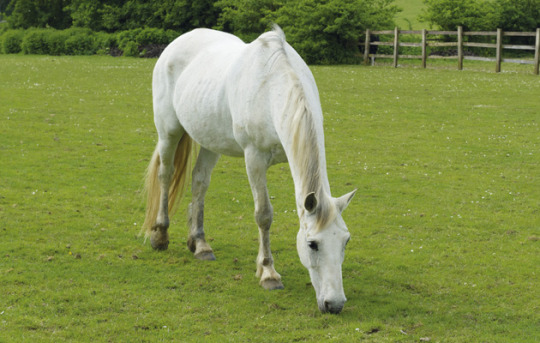
A fully greyed-out horse at adulthood. Even all grey, the skin around it's eyes and nose is still black, because the skin underneath has not lost color, only the hair.
A white horse is born white, will always be white, and is never naturally any other color. The skin of a white horse is pink, because it, like the hair, does not have color.
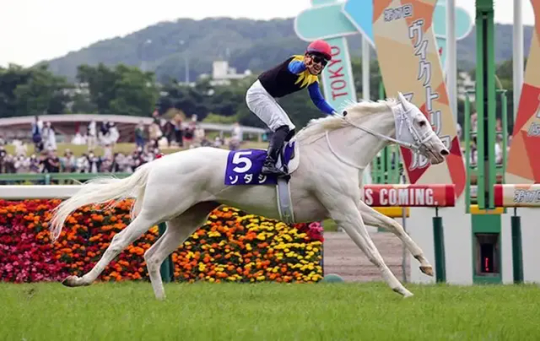
Sodashi is a Japanese racehorse and a member of a super-rare white horse family. Several members of her family are pure white, due to a mutation that gives them extreme white pattern, much like with the Tobiano gene. Her relative, Buchiko, shows the minimal pattern that gives them their white color.
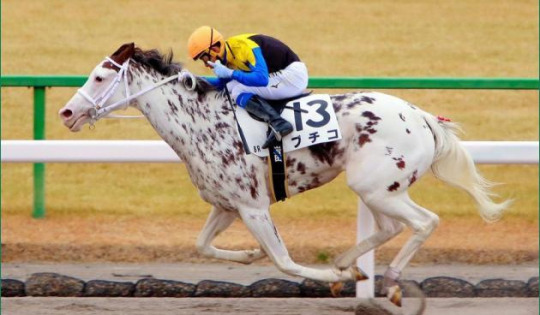
Same pattern, but maximal and minimal expression!
#reach#writing#writing horses#writer advice#how to write#writing advice#writing help#writeblr#creative writing#writers on tumblr#writeblr community#writers#writerscommunity#horses#basic horse things#horse colors#cowboy
133 notes
·
View notes
Note
Could you make a guide on how to differentiate between tabbies? :o
of course! here's a guide by our beloved messybeast, but I'll be going into it further below the cut!

a small guide on how the tabby gene works, because i feel it's appropriate:

the a locus/agouti is what causes patterning in a lot of mammals including cats. basically, it determines how black and red pigment is made. on tabbies, it causes hairs with alternating stripes of black and red pigment by affecting the different signals that cause pigment. so, one gene determines whether the cat is solid or tabby, and another determines the pattern
ok! going to be going over common patterns first! first up, the mackerel tabby:


named because some absolute legend thought their vertical stripes looked like the stripes on a mackerel fish:

this is one of the most common tabby patterns! they're characterized by their vertical stripes all along their bodies. also come in the broken mackerel variety, which is pretty self explanatory:


the broken mackerel pattern isn't a breeder-recognized pattern but i recognize it so whatever. not to be confused with the spotted tabby (which i'll be covering in a hot sec)
next up is the classic (or blotched) tabby!


also common, and notable for the "bullseye" or "spiral" marking on their sides. these can be confused with the marbled tabby (which i'll also be covering later)
next is the spotted tabby! characterized by round-ish spots following a vertical pattern


the difference between the spotted and broken mackerel tabby is that the spots tend to be distinctly broken up and don't form lines, but it can be difficult to tell the difference sometimes!


next common pattern is the ticked tabby. these guys have no visible striping on their flanks, but stripes on their faces, legs, and tails. the fur on their flanks is "ticked," with the agouti fur that is between the stripes on other tabbies covering their entire flanks.


so! those are the tabby patterns that can be found most commonly and in random breeding. that doesn't mean these are specific to random-bred cats, obv, but are the ones you're most likely to encounter.
these next ones are a lot less common and tend to be breed-specific, especially to domestic/wild hybrids. before we continue, here's a good statement from the american association of feline practitioners on the ethical problems with hybrid cats. if you're not aware of these problems, i'd really recommend giving it a read! with that being said, i also won't be highlighting early-generation hybrids (hybrids with very recent wild ancestry). ok, continuing!
rosetted tabby! most famously found on the bengal!


marbled tabby, also known from the bengals:


it can look pretty similar to the classic tabby, but it's derived from the "twilight charcoal" pattern inherited from the asian leopard cat.
the candle-flame or braided tabby, found largely on toygers:


this is a twilight charcoal modification of the mackerel tabby. agouti hairs grow between the stripes to create a "hollow" appearance
i've decided to leave a few minor patterns out because they're pretty rare and largely found on uncommon hybrids and tumblr won't stop trying to eat the images i'm attaching so! bye
98 notes
·
View notes
Text
introducing the new rats!
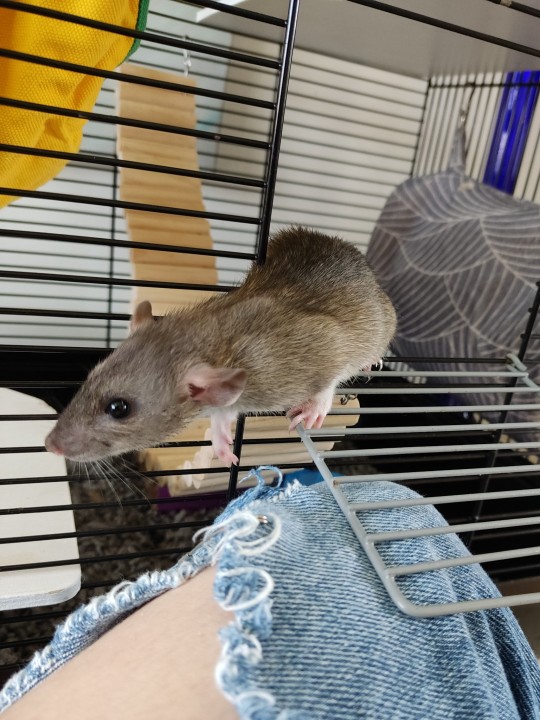
this little guy is seb! or sebastian. he's a agouti berkshire dumbo. he seems to be the bravest of the group in regard to people and also the calmest.
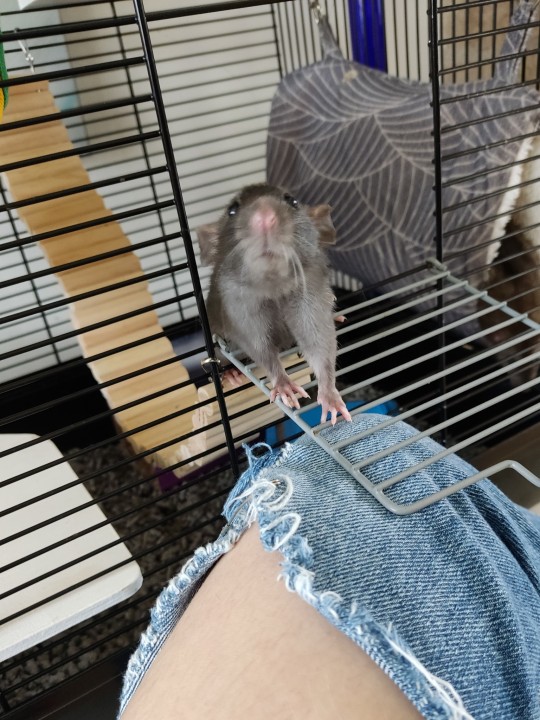
this is frankie or franciscus. he's a black self dumbo. he's a bit more shy than his brother seb but he's getting there. he likes exploring and hiding food in a corner of their cage.

this is gus (guus in dutch) or augustus. black berkshire dumbo. i got him later than his brothers so i don't know him very well yet, but he seems like a friendly and curious little guy. his breeder couldn't find a home for him so he was given to me for free so he could live with other rats his age.
#rat: sebastian#rat: frankie#rat: gus#ratblr#rats#pet rats#fancy rats#my rats#rat#rodent#baby rats#rittens
69 notes
·
View notes